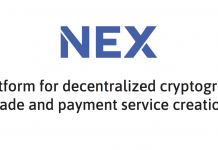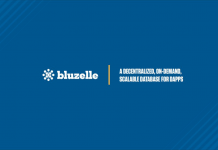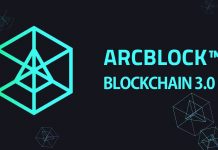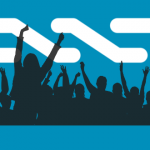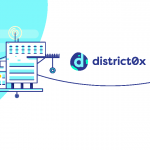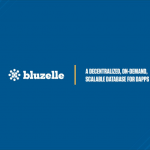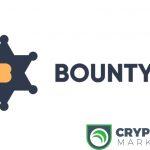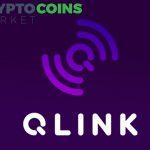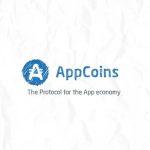Datum allows anyone to store and trade structured data like social network data, data from wearables, etc. Datum network works with third-party apps.
SUMMARY.
- Project name: Datum.
- Token symbol: DATG.
- Website: https://datum.org/
- Whitepaper: https://datum.org/assets/Datum-WhitePaper.pdf
- ICO Hard cap: $46M.
- ICO Soft cap: $1.5M.
- No of tokens being sold at ICO: 780M tokens.
- Percentage of total supply: 26%.
- ICO price: $0.0301 @ DAT.
- Payment methods: Ethereum (“ETH”).
- Presale: Presale sold out! 5000 ETH Raised.
- No of tokens being sold at presale: 750M tokens.
- Percentage of total supply: 24%.
- White list: None.
- Escrow:Yes.
- ERC20 token: Yes.
- Role of Token: Enable trade of data between data owners and buyers.
- Crowdsale date: Oct 17th to Nov 17th.
- Token distribution date: Once the crowdsale has ended.
- Country of origin: Switzerland, Hong Kong, Singapore.
- Blockchain: Ethereum.
- Consensus: Proof of Work.
- Twitter: 9466 followers, 176 tweets.
- Facebook: 26666 likes, 176 posts.
PROJECT OVERVIEW.
Data is the new Oil. The distributed Datum database allows anyone to backup structured data like social network data, data from wearables, smart home and other IOT devices in a secure, private and anonymous manner. Datum then provides a marketplace where users can share or trade data on their own terms.
Datum provides a simple and easy to use mobile app backed by the Datum ecosystem, Datum marketplace and open API.
BACKGROUND.
Data is the most powerful asset of the digital age. When you make an online purchase, visit a web page, click an ad, or share something via email — it’s all data. But where does it go once you’ve produced it? Do you retain control of it? No! Large corporations and malicious individuals use it to target you, exploit your preferences and follow you through the digital atmosphere. Unfortunately, they don’t care whether you’re interested in these interactions.
Companies profit from that data, reusing it for new purposes internally or selling it to other entities. As an example, Samsung created the ARTIK Cloud Monetization service to let companies monetize Internet of Things (IoT) device data. Marketing Agencies are paying upwards of $100 / month for access to users Facebook accounts. That is how much your Facebook data alone is worth, extend this to Google, Twitter & co and you are looking at thousands of dollars’ worth of data per year.
Companies should do what anyone does to get access to something they want that’s valuable: pay for it. This is especially true since companies don’t just want their own data; they also want data from other related providers.
There have been some ad hoc approaches to selling data, including a Kickstarter project that sold Federico Zannier’s online activity. Some companies offer small perks or small cash payments to users who share their data. Making data available on a wider basis, though, requires developing formal marketplaces.
Marketplaces that use blockchain technology and cryptocurrency make it possible for users to securely store their information and sell it via enforceable contracts. Datum uses BigChainDB and Ethereum blockchain protocol to enable the buying and selling of user, social, wearable, internet of things, smart care, health, and other data. Consumers will have the choice to sell their data and making sure the financial benefits aren’t just limited to the companies involved.
Datum aims to restore your ownership of the virtual you. A comprehensive network designed to encrypt data, Datum allows you to turn the tables on those companies, and sell them your IOT data (from smart thermostats, social networks, wearables, and more) at a premium.
HOW IT WORKS.
Data is tracked by users and organizations and uploaded to the Datum network using the Datum Pro client. The user submitting the data pays a nominal fee in DAT token to the storage node miners who store the data and transmit it when a purchase is made.
When users sell their data in exchange for Datum it is anonymized data. Datum offers different levels of anonymity depending on the data; by default all data is sold completely anonymously, which is ensured by data sanitation algorithms that. For example, the removal of a user’s location information from data, as well as with fine grained control over what aspects of the user’s identity, are linked to the data.
Datum also specifically allows users to connect various level of “identity” to their data in order to attract a higher price. A use case would be the sharing of health data with researchers or pharmaceutical companies, which may require identification from a user in order to accept this data.
Once data consumers show interest in purchasing data, the user receives a detailed purchase request. The user can agree to the request and send the decryption key to the data consumer or counteroffer with a modified proposal.
A buyer agrees to the usage terms and buys the data using DAT token; this triggers the Smart Contract that automatically releases the key required to decrypt the data and sends the DAT tokens to the data owner in payment.
FEATURES.
The Datum App.
The Datum app allows anyone to securely sell their data directly from their mobile phone; setup is as easy as logging in with the account of your choice. The app provides full control and transparency over what data you can sell, who is buying the data and what exactly is transferred. Payments occur instantly through the DAT token which can be easily exchanged for Ethereum, Bitcoin or other currencies.
Decentralized Data Store.
Through secure, private and anonymous storage of structured data, Datum returns data ownership back to individuals and let’s everyone control whom they share their data with and for what price.
Datum allows companies unprecedented access to user’s data, with users consent. Currently developers are restricted by what Facebook, Google etc offer through their APIs, and these APIs come with massive restrictions and limitations. With Datum companies can buy the user data they need directly from users. No middlemen needed. Simple and straightforward.
Marketplace.
Users can choose to share their data selectively or even sell their data to trusted entities.
Storage Nodes.
Miners running Datum Storage Nodes are paid for storing and providing low latency access to data. All you need to mine is a free disk space and fast internet. No GPUs. No crazy electricity bills. Just DAT tokens coming in to your wallet.
The founders have not set the precise amount of DAT tokens required to run a storage node yet, the exact values are subject to simulations that will be run on the test network which will launch before the end of 2017.
BLOCKCHAIN LEVERAGES.
The Datum secure and decentralized personal data bank account is powered by Ethereum, BlockchainDB and IPFS.
Smart contract.
The Datum network relies on the DAT token smart contract to provide secure trading of data while respecting the terms set out by data owners.
BigchainDB.
Datum allows individuals to back up their personal data, such as social network data and data from wearables and other IOT devices, on the Bigchain DB blockchain. User data is submitted via the Datum client to the network and encrypted with the usage rules set by the data owner. This allows for secure storage of data in a trustless and decentralized manner, where individuals own the keys to their own data, outside the control of any large entity.
With high throughput, sub-second latency and powerful functionality to automate business processes, Bigchain DB blockchain looks, acts and feels like a database with added blockchain characteristics. BigchainDB allows developers and enterprise to deploy blockchain proof-of-concepts, platforms and applications with a scalable blockchain database, supporting a wide range of industries and use cases.
IPFS.
Datum plans to use the IPFS distributed data storage protocol. IPFS aims to supplement, or possibly even replace, the Hypertext Transfer Protocol that rules the web now. Here’s the problem with HTTP: When you go to a website today, your browser has to be directly connected to the computers that are serving that website, even if their servers are far away and the transfer process eats up a lot of bandwidth.
As a peer-to-peer distributed file system that seeks to connect all computing devices with the same system of files IPFS aims to make the web faster, safer, and more open.
INTENDED USE CASES.
Many reasons exist for why businesses want to see customer data, and these reasons cross industries and data types. Some scenarios include:
- Retailers buy customers’ mobile phone data and credit card data to support real-time marketing and to personalize offers.
- Retailers sell customer data to consumer packaged goods companies to drive product design, and they sell data to credit card companies for marketing.
- Health professionals can use wearables data from fitness trackers to offer advice, and insurance companies can use it to alter pricing.
- Travel firms can use mobile, wearable, credit card, and retailer data to send custom offers.
- Smart home device data from thermostats lets utilities manage load and offer usage incentives.
- Insurance companies can use smart car data to set rates, cities and parking vendors can use it to promote smart parking, and manufacturers can use it to schedule repairs.
- Smart card data location data can apply to marketing, both general retail and car-related services such as traffic info.
- Health data can be used for quality assurance to support pay-for-performance, support clinical trials, and market health care products and services
- Retailers can use social media data for marketing purposes.
HOW ADVANCED IS THE PROJECT?
- The Presale for the DAT Token has already ended. 5000ETH was raised.
GITHUB.
Repository(s): datum-presale-contracts, BigChainDB.
Starred by: 0,0.
Releases: 0, 32.
Contributors: 2, 40.
Commits: 7, 3387.
Forks: 0, 278.
Watch: 2, 1.
Branch: 1, 357.
Latest Commit: Aug 11, July 26.
DATUM TOKEN.
DAT tokens are the only currency used in the Datum Marketplace. This utility token used to pay fees for data submission on the network and as return for providing storage nodes.
Buyers of data purchase with DAT tokens and the individual users, the sellers of data, earn these DAT tokens. Users do not have to own any DAT tokens to start using the mobile app, a sort of “micro credit” will be given to start users off.
Value of DAT.
The token is ‘deflationary’, which means that as more and more people adopt it, and it is used, a small percentage of the tokens will be ‘burnt’ (or taken out of existence) over time, leading to a smaller supply and subsequently potential higher value.
OPPORTUNITIES.
1) Legislation by Governments and Antitrust Regulators, it is already on the way: However for this to work there needs to be a neutral (decentralized) network where the data can live that is not controlled by a single stakeholder (such as Facebook), that is exactly what the Datum Network provides.
2) Economics: Why buy data from Facebook or others when you can cut the middlemen and get data directly from users? Example: Uber used a startup unroll.me that was secretly reading people’s Gmail to pilfer Lyft receipts data so they could get competitive intelligence. With Datum Network it’s much easier as they can cut the middlemen and simply buy Lyft receipts data directly from users themselves.
3) Streamlined access to much more user data than developers and companies can get elsewhere, enabling a new bread of applications and services. Example: With the Datum Network API’s developers can tap into much larger and wider amounts of a user’s personal data (always with the consent of the user obviously).
4) Market Pressure: Users will start to demand that companies utilize safe data storage such as on the Datum Network.
TEAM.
The team has over 100 years’ experience building large scale data processing and management systems. There are six full time employees with vast experience in tech startups. This can be found on the https://datum.network/ website.
PARTNERS.
?
ROADMAP.
Datum have one focus - creating a viable data marketplace to start returning value to token holders in the shortest time possible. It all started in September 2016, when the founders started exploring large scale data storage for IOT devices in the medical and smart home sector and devise first prototypes of structuring unstructured data. Here is the roadmap:
Dec 2017: Test Network Launch. The launch of the Datum test network marks the beta release and will allow basic functionalities to be explored by developers and the community.
Mar 2018: Release Candidate. The feature complete release candidate will be deployed to the test network and undergo intensive testing and bug fixing over the three months.
June 2018: Datum Launch. The launch of the Datum Main Network marks the start of the new data economy. At this point the Datum Network will consist of the decentralized Storage Layer, the Datum App, Open API’s to submit and consume data and a full-fledged trading system.
COMPETITORS.
There already exists a worldwide market with various data brokers such as Acxiom, Experian, Epsilon, CoreLogic, Datalogix. Since they are not blockchain-based, users are not in control of the data that is collected and monetized from them.
The key Blockchain competitor is Pillar, which is developing a open-source, multi-chain wallet as a personal data locker. The pillar wallet holds all assets such as health records, financial records, money, ownership of things, resumés, etc., and is intended to replace numerous accounts. Pillar is available on various Blockchains which users can access with a single password. One main difference between Pillar and Datum is that Pillar aims to be a universal operating system, replacing iOS and Android apps with its personal data locker, whereas the Datum network works with third party apps. Pillar is trading at $0.064412 since its 15. Jul 2017 ICO.
Another similar project was implemented by the Brave browser, which allows users to collect rewards from advertisers for engaging with marketing content using the Basic Attention Token (BAT). The BAT is planned to function as reward for users sharing their personal information with advertisers. Datum, differing from the Brave browser, focuses on the secure and private storage of data and allows users to sell their data to data consumers other than advertisers. BAT is trading at $0.25214231 since its May 2017 ICO.
Another is Cappasity which creates databases of 3D images useful for VR and online retailers. Rather than having to pay Google or a corporate conglomerate who set their own prices and can refuse certain users, platform members are free to set prices and sell to whomever they like. Cappasity focuses only on VR data unlike datum. Still in ICO phase.
The last one is Blockstack, a developer platform and a new decentralized internet for secure and server-less applications. Blockstack allows users to back up their encrypted application data on any cloud storage provider, from traditional solutions like Dropbox to new alternatives such as Storj. The data is stored in an encrypted form so the service has no visibility into the data. Also, users can prove whether or not the service has tampered with the data. (For those of you who understand the jargon, the cryptographic hashes of the data are stored on the blockchain.) ICO not announced yet. Blockstack is a browser portal with its own apps while Datum works with third party apps.
How is Datum different than other storage platforms in the space?
Datum focuses on storing structured data (say, social network data or data collected from wearable devices). Data is normally stored in databases (e.g. an Excel file), and most other storage projects such as Storj, Sia, Maidsafe, Filecoin, etc focus on storing files and other unstructured data. The value of unstructured data is very limited (who really wants to see your family photos?), whereas structured data can be read and interpreted by machines and algorithms, and that is where the most value lies.
Technically, Datum is a globally scalable cluster of “storage nodes,” based on MongoDB, which is a mature and stable NOSQL database. Most other storage projects in comparison use a file system to store files (blobs) instead of structured data.
PROS.
- They have an interesting concept of turning user data to cash.
- This is an interesting project, and the use of big data blockchain will make the network more secure, powerful and better for social services, and the future world will be the world of data.
- They have a great team.
- The token has potential to gain value.
- The new personal data information economy is valued at USD 120 billion market by 2022.
- 51% of tokens sold to public.
- ICO tokens held in escrow.
- Datum app integrates with other 3rd pirty apps.
CONS.
- It will be hard to disrupt huge companies such as, Facebook.
- Datum promised to release a demo of the Datum app at the end of August. It’s not yet released.
- The fully operational Datum ecosystem will be launched in 2018.
- There are many players within the field.
CONCLUSION.
Today, a significant portion of our lives are virtual. The web has increased convenience, enhanced our human experience, and given us access to things we never before thought possible. While solutions like Datum seem cutting edge, the reality is that we have only just begun to learn about ways that the genius of Blockchain technology can be put to use for data control and monetization. Unquestionably, new applications and systems will continue to arise, creating more and better ways for individuals to take control of the data they create and produce.



